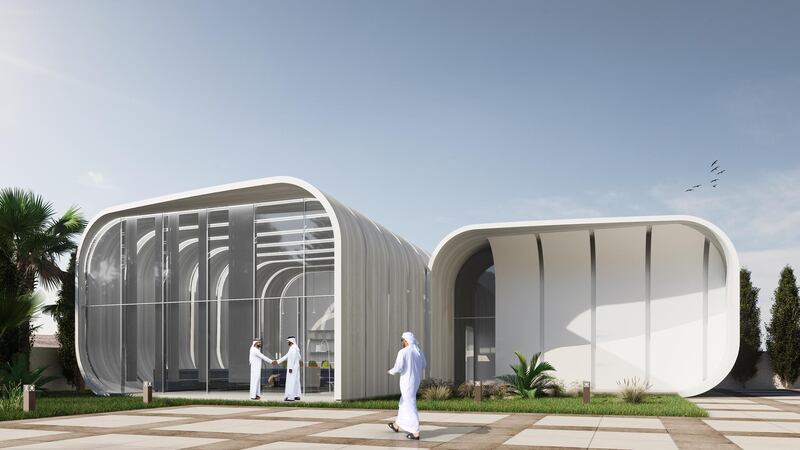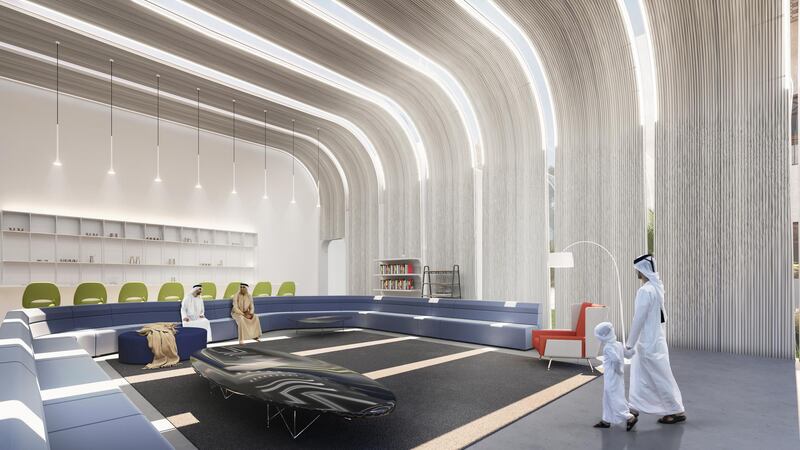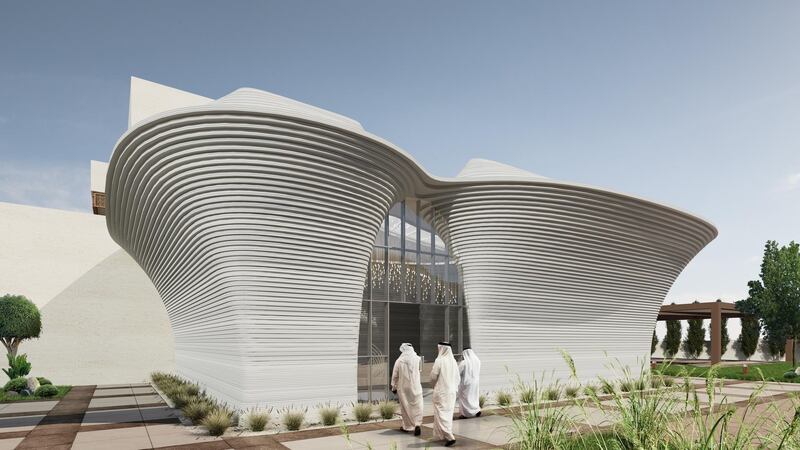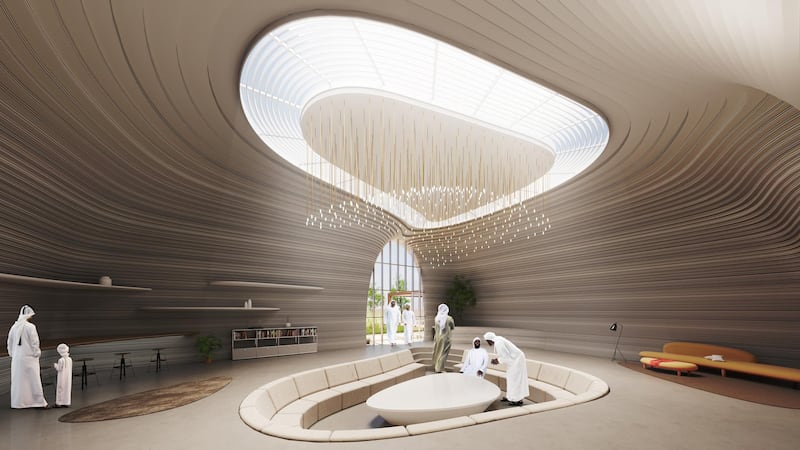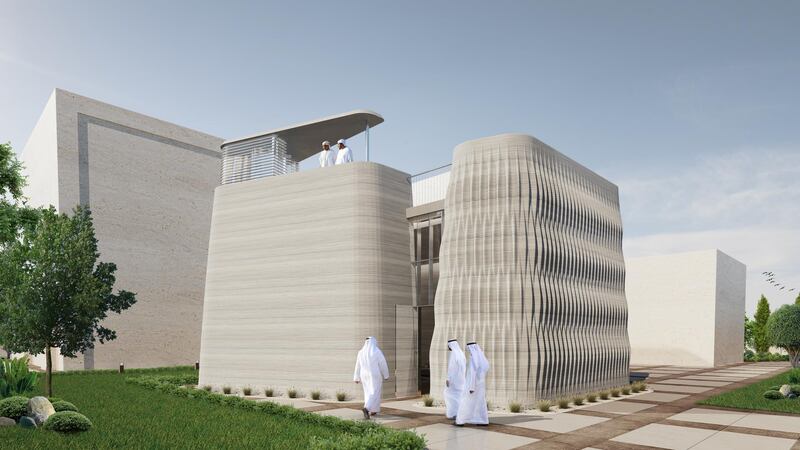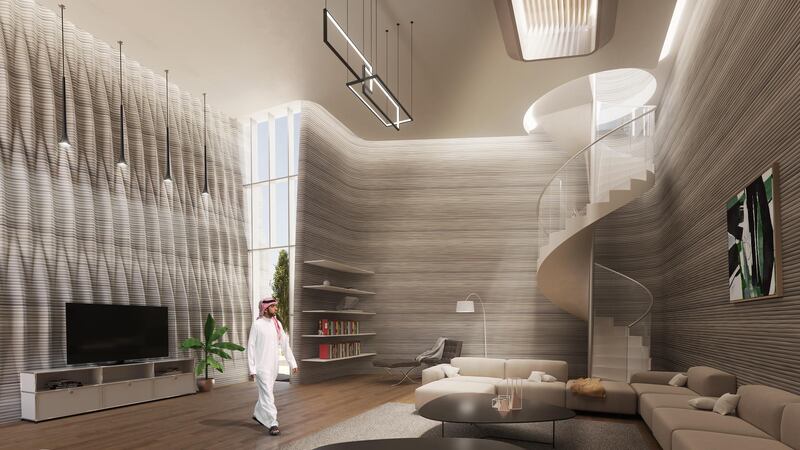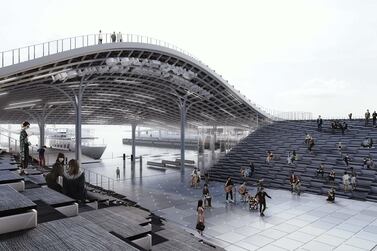Picture a typical majlis. You might think of intricately patterned rugs and plush seats, but a Dubai architecture and design studio hopes to put an innovative twist on the traditional look with its 3D-printed models.
Middle East Architecture Network (Mean) has revealed the designs for three majlis models, all intended to be created with concrete 3D-printing technology. The options are replete with skylights, built-in seating areas and space for a rooftop garden.
The concept for using 3D-printed technology for the majlis, a private lounge or parlour for guests usually found in Arab homes, began in 2019. Mean was approached to design the annexes for Emirati housing communities in Abu Dhabi; however, the project was scrapped because of the pandemic. But the company held on to the designs and is now pitching them to potential clients.
The three options vary in size and style. The first, known as the Capsule Pod, is designed to seat 25 people and features wide arches that allow light to fall between the gaps. The stand-alone structure would be made of prefabricated concrete sections, while other parts would be printed and assembled on-site.
The second model, Fluid Space, possesses a recessed seating area and roof skylight. It is designed to be attached to an existing villa and can welcome 22 people. Its main 3D-printed parts would be its shell structure and roof.
Folded Walls, the final model, features a section with purled, textured walls and a winding staircase that leads to a rooftop for extra seating. It can seat 18 guests in all.
Using conventional construction methods, such projects would take months to realise; however, with 3D printing, the models can be up in weeks.
Sleek and futuristic, they may appeal to those whose interests lie at the intersection of technology and design.
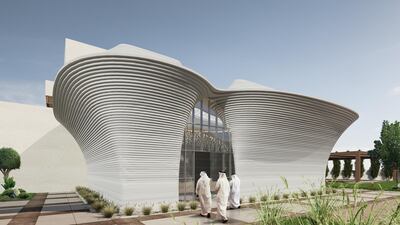
“We typically market to millennials who are investing more in their homes, especially at this particular time. Clients who are open-minded and curious about technology, innovation and the built environment,” says Mean’s founder, architect Riyad Joucka.
These are the traits of those who make up Mean, too. They are a team of architects, designers and programmers intent on fusing the latest technologies, 3D printing included, with architecture and product design.
While these digital fabrication tools and materials are still nascent, particularly in the region, Jordan-born Joucka – who has studied in Canada and has worked in Hong Kong, Sydney, Mexico City and New York – has great hopes for their future. "3D printing is more efficient with material, labour cost and time," he says. He explains that the technology discards fewer materials than traditional construction and requires fewer labourers on-site. "There are multiple advantages to the technology, particularly in the Middle East. Concrete works quite well in insulating against the environment … We see that this will become a more commonplace technology to use in different typologies of architectural spaces."
Another side of Mean's practice is product design. Its latest is Mawj, a 3D-printed armchair that appears, at first glance, as though it were plucked from a sci-fi film set. Its undulating design matches its name, Arabic for wave, with fluid shape and rippled textural surface. Manufactured by design brand Nagami in Spain, the chair is priced from Dh8,000 to more than Dh10,000, depending on the colour. Pre-orders are keeping the architecture and design company busy, Joucka says.
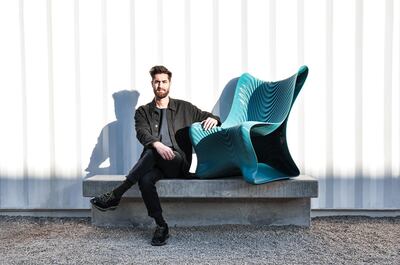
While the value of the global 3D printing industry is expected to surge in the next few years, there are still barriers to its widespread adoption, including access to tools and the price. "The technology is still in its infancy, so there are a limited amount of suppliers that would take on a 3D-printed project," Joucka says.
As a result, the technology will not necessarily serve as an alternative to typical construction, but simply cater to those who specifically want to utilise it. With regard to the cost of such bespoke projects, Joucka says the price would not be so different from usual construction expenses, citing the example of the 3D-printed majlis.
Still, Joucka believes he is in the right place for this rising industry. "Dubai has a very open appetite to new technologies," he says, citing the Dubai 3D Printing Strategy that aims to have 25 per cent of the emirate's buildings made using the technology by 2030.
